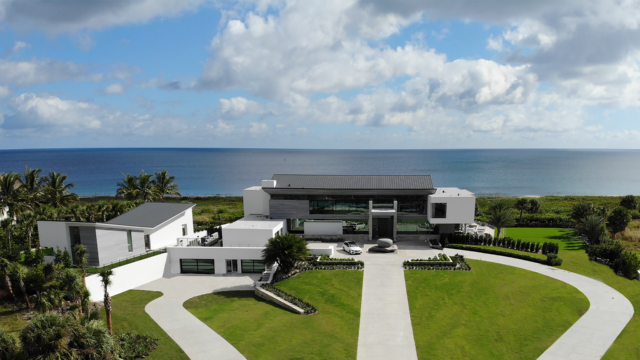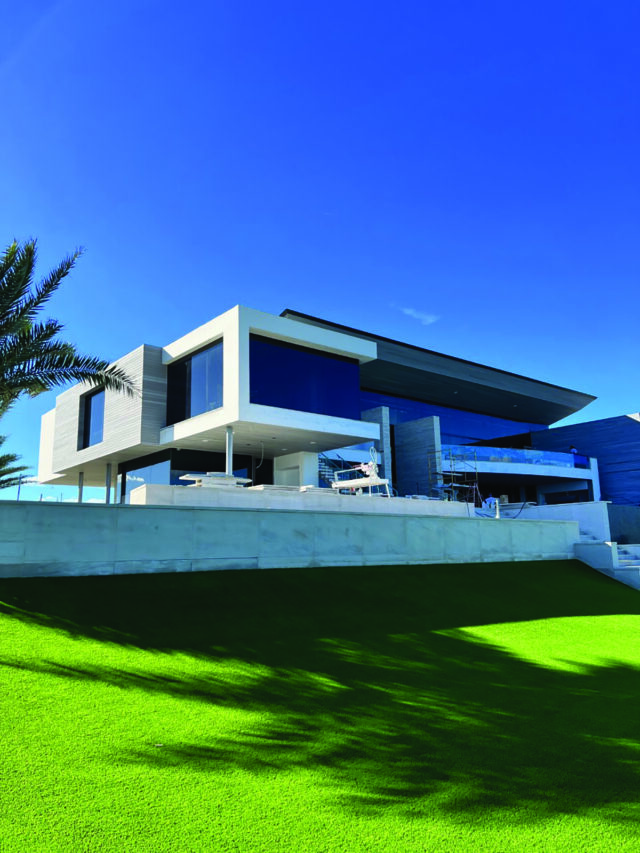
Cristina Cuomo: Your book, Assembled in Light, which I absolutely love, is a real testament to the importance of saturating a space with natural light. Clearly light is paramount for you. Talk to me a little bit about the role light plays in your designs.
Christopher Coy: Light is huge—you can’t see any forms unless they are revealed in light. As important as light is, light also creates shadows, so shadows are great form-definers as well. You want to be happy in your house, and I think that in terms of basic human psychology, light is really important, and that’s why there’s such a difference living in an old house, as I do, and then walking into one of the houses I’ve designed. I feel so much better and my mood improves. I think it goes back to ancient times—in daylight there were fewer dangers. At night time you couldn’t see what animal was coming after you or who was coming after you, or what was going on. As the day proceeds and the sun moves around the house, that’s the part I enjoy.
Cristina Cuomo: With the big migration to Florida that occurred during and post-COVID, you took on this amazing project in Vero Beach, and in Florida there’s a lot of light, and not a lot of change and shadow. Tell me how you constructed this design to create something that wasn’t too intense. The light is so intense there.
Christopher Coy: This is a six-year project we’re just winding up, so I’ve been going down there every three weeks during that time. And so, of course, I’m there a lot in the summer, and it gets brutal. We build smart houses with control of the shades—when the sun rises, sheer shades come down. As the sun climbs and becomes more powerful, a thicker shade comes down to cut some of the heat. We had to do some very heavy air-conditioning, because you want the glass for the view, but even if the sun is not on glass, the glass can transmit heat.

Cristina Cuomo: Why was this a favorite design project for you?
Christopher Coy: This property on Vero Beach is one of eight pieces that go all the way from A1A Coastal Highway to the ocean. Everything else up and down the Atlantic coast has been bought up. There are eight pieces that never got divided, and this is one of them. We were creating a little drama here, because to tell you the truth, the Atlantic coast of Florida is pretty flat. The natural landscape is not that interesting, but that creates opportunities to force a little drama onto the design. As you approach the motor court, where a sculpture is sitting in front of the front door, the house twists in perspective. The main house has a butterfly roof whose spine travels from south to north, and the guest house also has a butterfly roof whose spine travels from south to north. We had to accommodate a lot of art, and then we took this crazy trip to Bali and we had to accommodate all the stuff we bought.
Cristina Cuomo: Did you employ a geothermal system?
Christopher Coy: The clients didn’t want to use geothermal. I didn’t understand why, because geothermal is better on the AC cycle than on the heat cycle, because you’re pulling up 55 degree water out of the Earth, circulating it through air handlers, and there’s your AC. It’s practically free.
Cristina Cuomo: It’s not just the practicality and the energy-saving device. It’s aesthetically more pleasing.
Christopher Coy: Much more pleasing, because you don’t have to have all those condensers outside. And also, geothermal is the right thing to do for the warming climate.
Cristina Cuomo: You have the rising sea levels, especially in Florida, and you mostly design on the water. That’s pretty much your MO. How do you see designs changing as a result of having to follow these new guidelines?
Christopher Coy: The first thing we see is that we’re required to build the floor levels higher in anticipation of rising sea levels. I like to say elevation is our friend, because if you’re required to build floor levels higher, that just gives everybody a better view. The dunescape is beautiful; we were allowed to build a walkway through it down to the sand. One of the things we bought on our trip to Bali was a traditional 30-foot fishing boat. It sort of looks like a Polynesian fishing boat—long and narrow and painted bright blue. We’re going to put that down on the beach. When the clients entertain, the boat will be lined with zinc, and filled with bottles of water and champagne.
Cristina Cuomo: Is there anything you want to share about future projects?
Christopher Coy: I’d love to get another job down in Florida. It’s nice not to have to worry about snow and the extreme changes in temperature. But my first love is always going to be designing in this area, east of the canal. It’s a very small, fragile environment, and therein lies its beauty. I think people have to be very careful what they do here. We have extreme temperature changes, we have salty air and hurricanes, but I think we get a lot for it. barnescoy.com



